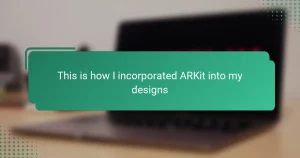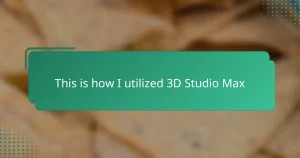Key takeaways
- Adobe Dimension offers an intuitive interface that simplifies 3D prop design, enabling users to focus on creativity rather than technical details.
- Key features like customizable materials and real-time lighting feedback significantly enhance the realism and mood of sci-fi props.
- Effective set design involves a step-by-step process, emphasizing the importance of materials, lighting, and intentional object placement.
- Staying organized and open to experimentation is crucial for maintaining a smooth workflow and achieving compelling designs in Adobe Dimension.
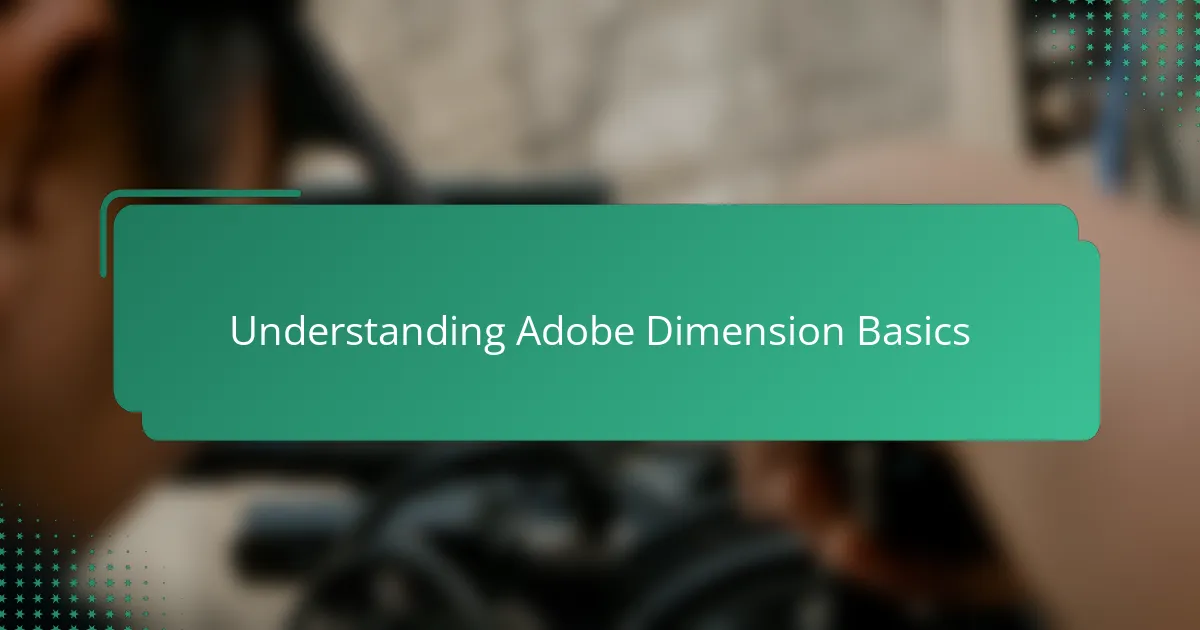
Understanding Adobe Dimension Basics
When I first opened Adobe Dimension, I was immediately drawn to its clean and intuitive interface. The way it allows you to easily drag and drop 3D models into a scene feels surprisingly natural, even for someone like me who’s more familiar with traditional design tools. Have you ever tried building a set and wished for a tool that blends simplicity with power? That’s exactly what Dimension offers.
One feature I found truly helpful is how materials and lighting are controlled. It’s like painting with light and texture directly onto your 3D objects, giving you instant feedback. This hands-on approach made me feel more connected to the creative process compared to other 3D programs that often feel overwhelming.
Understanding these basics gave me the confidence to experiment without getting lost in technical jargon. Adobe Dimension’s focus on straightforward tools means you spend less time figuring out software and more time bringing your sci-fi props to life. It’s a subtle but game-changing shift that can elevate any set design project.
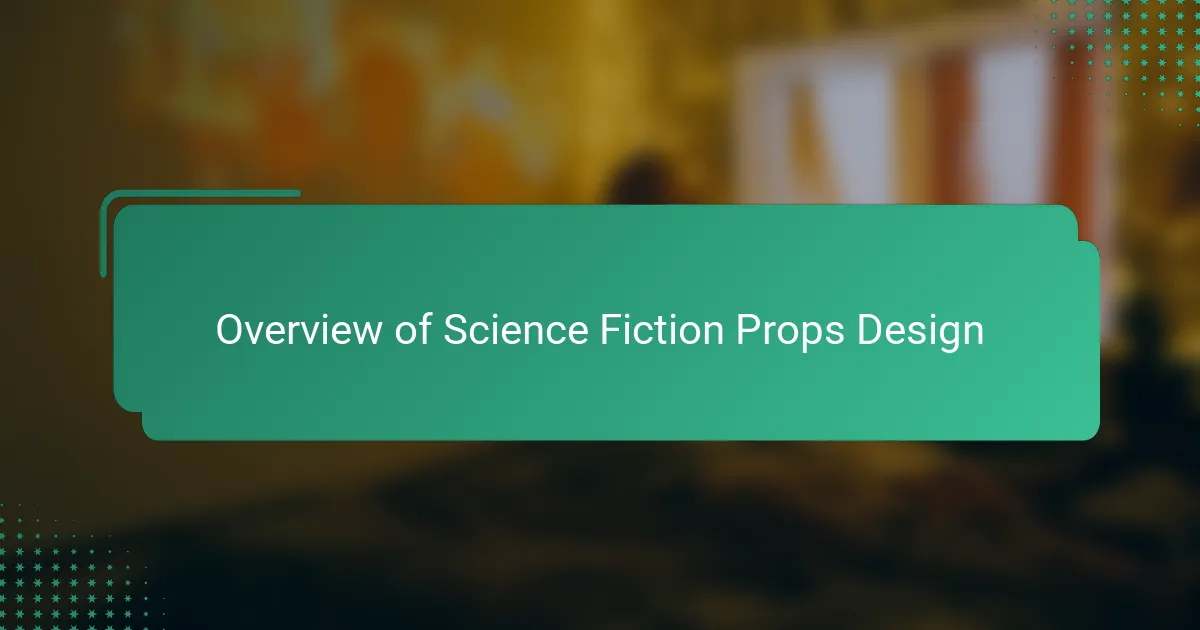
Overview of Science Fiction Props Design
Designing science fiction props is a unique challenge because these objects must feel futuristic yet believable. I’ve often found myself balancing between creating something eye-catching and ensuring it fits seamlessly into the story’s world. Have you ever noticed how a single prop can either ground a scene or make it feel completely otherworldly?
In my experience, the key lies in the details—textures that suggest advanced materials, shapes that hint at unknown technology. Science fiction props aren’t just decorations; they’re story elements that communicate mood, culture, and even character backstory without a single word.
What fascinates me the most is how sci-fi prop design pushes creative boundaries. It invites experimentation with forms and functions that don’t exist yet, letting designers like me imagine the future. This freedom makes every design session feel like a mini exploration into the unknown, which keeps the process exciting and fresh.

Key Features for Prop Creation
One key feature I immediately appreciated in Adobe Dimension for prop creation is its vast library of customizable materials. Being able to tweak metal sheens, glass transparency, or futuristic textures with just a few clicks made it easier to craft props that felt authentically sci-fi. Have you ever struggled to get that perfect reflective surface on a gadget? Dimension’s material controls cut down what used to be hours of trial and error into minutes.
Another standout for me was the lighting system. Proper lighting can make or break the mood of a prop within a scene, and Dimension’s real-time feedback allowed me to experiment with different light angles and intensities instinctively. I remember working on a high-tech control panel prop and how shifting the light dramatically changed its perceived functionality and realism. Without this feature, I doubt I would have achieved that same level of depth.
Finally, the ability to easily position and scale objects with simple drag-and-drop controls felt incredibly intuitive. When designing sets, time is always tight, and Dimension’s straightforward interface meant I wasn’t bogged down by technical hurdles. It almost felt like sculpting with clay—moving pieces around until the perfect arrangement emerged naturally. Have you ever wished a design tool could just get out of your way and let you create? This is exactly that kind of experience.
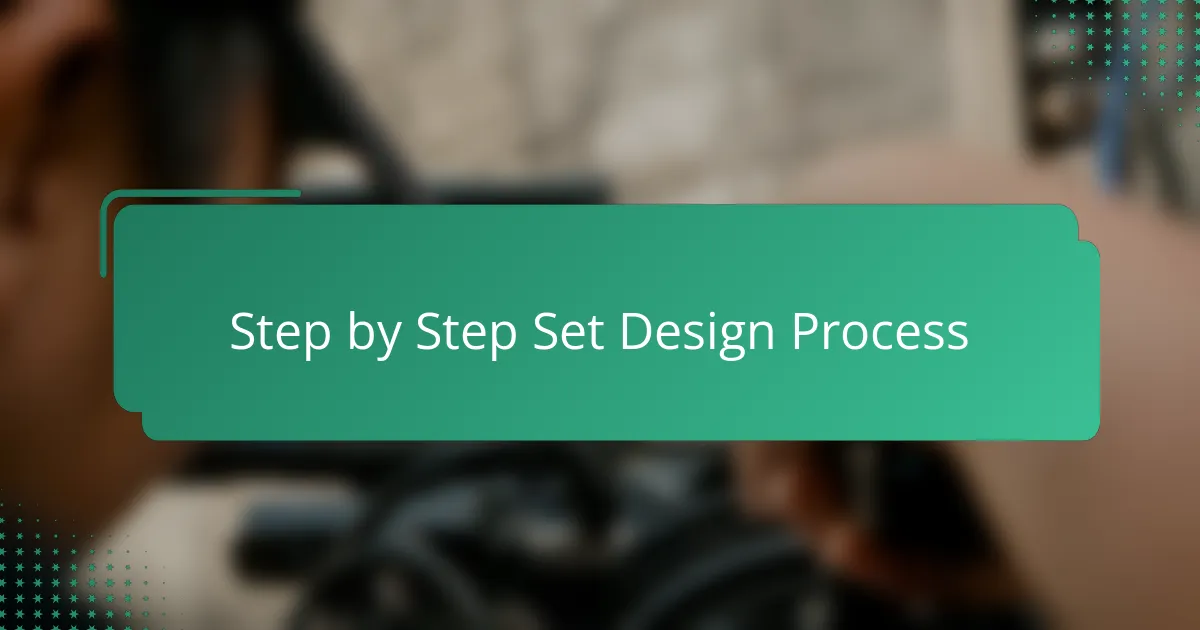
Step by Step Set Design Process
Starting the set design process in Adobe Dimension felt like piecing together a puzzle where every element had its place but still room to breathe. I usually begin by importing my base models and roughly positioning them, trusting my gut on spatial relationships before refining. Have you noticed how those first few moves set the entire tone for the scene? For me, this step is both thrilling and a little nerve-wracking—like setting the stage for a story yet to unfold.
Next, I dive into adjusting materials and lighting, which feels surprisingly like sculpting atmosphere rather than just tweaking visuals. I often catch myself experimenting endlessly with subtle light shifts, because a tiny change can suddenly bring a prop to life or make it disappear into the background. It’s a delicate balance, but that hands-on tweaking keeps me engaged and fully present in the moment.
Finally, I focus on fine-tuning scale and placement to ensure every prop looks intentional and fits the story world. There was one project where I kept resizing a glowing panel until it felt just right—neither overpowering nor insignificant. That iterative dance of trial and error reminds me that good set design isn’t about perfection first try; it’s about patience and letting the scene breathe until it clicks. Have you ever experienced that satisfying moment when everything just falls into place? That’s when the set truly starts to tell its story.
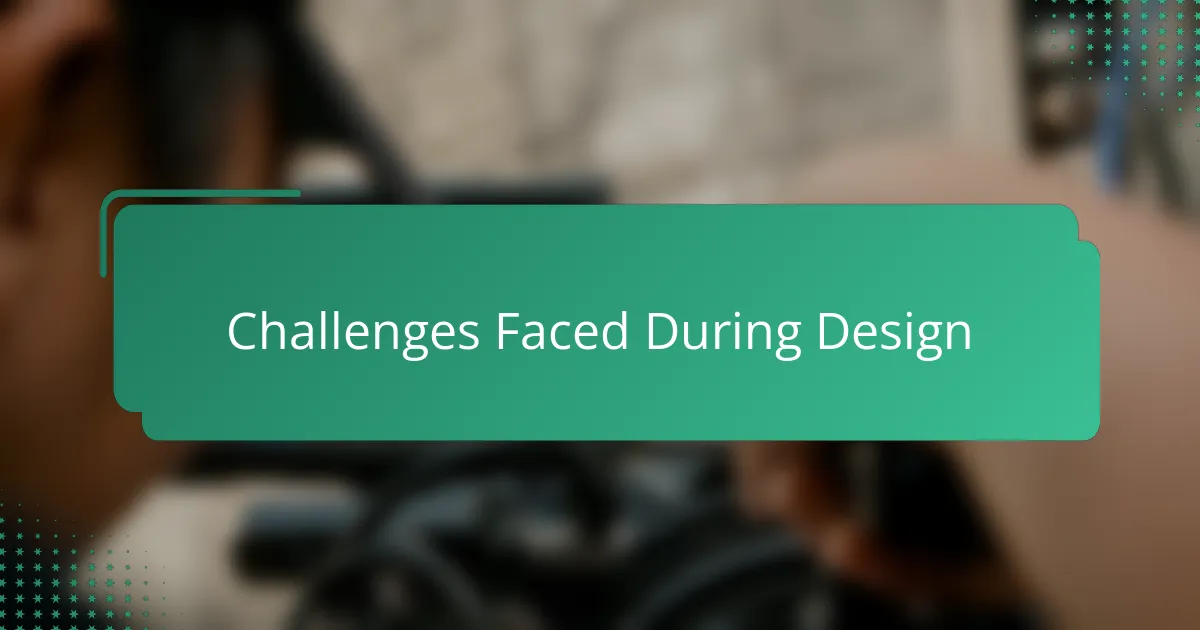
Challenges Faced During Design
At times, working within Adobe Dimension felt like wrestling with limitations rather than creative freedom. For instance, I struggled to achieve certain complex textures that sci-fi props demand; the material presets were helpful but sometimes just not enough to capture that otherworldly finish I envisioned. Have you ever hit a wall trying to push software beyond its intended scope? That frustration was real for me.
Another challenge came from lighting constraints—while Dimension’s lighting tools are great, I found it tricky to replicate dynamic shadows that sci-fi settings often need for a dramatic effect. I remember spending way too much time adjusting light angles, only to realize I was hitting a ceiling with what the program could simulate. It made me appreciate how much real-world lighting design influences mood and atmosphere.
Finally, managing scene complexity tested my patience. As the number of objects grew, navigating and positioning every prop became cumbersome, partly because the interface occasionally lagged on my setup. I asked myself, how do professionals handle such dense scenes efficiently? It reminded me that mastering any tool takes time, and that patience is as much part of the creative process as inspiration itself.

Personal Tips for Effective Use
One tip I can’t stress enough is to take full advantage of the material editing features early on. I used to rush through this step, only to realize later that tweaking the metallic sheen or surface roughness made all the difference in achieving that authentic sci-fi look. Have you ever felt stuck because your prop just looked “off”? Spending a few extra minutes here saves hours down the line.
Another thing I learned the hard way is to keep your scene organized from the start. I once created a complex set with dozens of pieces but failed to name or group them properly. When I went back to adjust lighting or reposition objects, it became a headache. Keeping layers and groups tidy might seem tedious, but trust me, it keeps your workflow smooth and frustration low.
Finally, don’t be afraid to experiment with light placement—even small shifts can completely change your prop’s mood. I remember moving a single light source by just a few degrees and suddenly the whole control panel I was designing gained depth and mystery. Have you ever noticed how lighting tells a story on its own? That discovery made me fall in love with Adobe Dimension’s real-time lighting feedback all over again.

